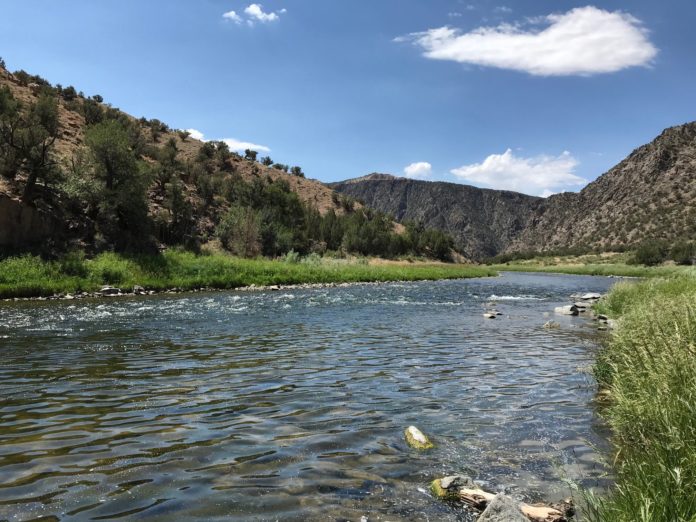Fishing is more popular than ever. That spot you used to fish that only you and your buddies knew about years ago? Odds are, it’s packed with anglers today. There are several reasons why this may be the case. “Spot burning” is a common phenomenon. When people see photos of good-sized fish on social media, they want to get in on the action, which means more and more people crowd one or two productive fishing holes. Add to that a surge in licensed anglers—according to a recent study, fishing license sales increased by 11.8 percent across the country in the first half of 2020. This increase was partially due to the COVID-19 Pandemic and last year’s shutdowns, but it’s likely that more than a few new fishermen will still be hooked for years to come. Instead of letting that get you down, take fishing’s newfound popularity as a challenge to find new water. Here are ten tips to escape the crowds and find unknown fishing holes, where you can enjoy your time in peace and catch more fish while you’re at it.
1. Get Away From Fishing Spots That Are Easy to Access
The most popular fishing holes are almost always the most accessible ones. If you’re able to access a fishing spot minutes from a paved road, it probably gets fished often. Generally speaking, if you’re willing to put in more work at the outset, you’ll reap the benefits with less crowded—and downright better—fishing later. That goes for hiking trails, too. Go the extra mile that other anglers don’t. If there’s no trail, that’s even better. Bushwhack or follow the side of a stream to find unknown fishing spots.
2. Find New Fishing Spots on Paper and Digital Maps
Make the most out of your time in the field by doing your research before you head out. Old-school maps and mapping apps can give you new ideas of where to fish. Look for waterways that you haven’t heard of before, like high mountain lakes, that have high odds of holding fish but just aren’t that popular or easy to get to. If you’re looking to fish along a river, look for places where the water slows. Joshua Baruch is the owner of Colorado Wilderness Rides and Guides, an outfit that specializes in backcountry fly fishing expeditions. He uses a mapping technology called CalTopo to get the lay of the land before exploring new areas in person. “I’m generally looking for areas of rivers with bigger bends in them that slow down water,” says Baruch. “Most fish feed in current between one and two miles per hour, so I want water that’s running at about a walking pace.”
Besides CalTopo, mapping services like onX Hunt and Google Maps allow anglers to find new water and to see which potential fishing spots are on public land and accessible. Google Earth recently released a time-lapse feature that lets you see how bodies of water have changed over the last 40 years. This means that you can look at lakes and reservoirs in drought years and search for good structure and habitat that is otherwise covered by water during a normal year.
3. Scout Like a Hunter to Find New Water
Fishermen don’t typically go “scouting.” This is something that’s generally reserved for hunters. But spending a couple hours or even a full day scouting can pay dividends for anglers. When you’re fishing, you typically spend most of your time doing just that—fishing. You might be able to work a mile or two along a stream or shoreline, but you won’t cover as much ground as you would if you were focusing specifically on searching for new fishing holes. Set aside time specifically for finding spots with good bug life and structure. Record what you find in a notebook, or on your phone, and then come back ready to catch fish.
4. Check Stocking Records—Years Back
State wildlife agencies host stocking records on their websites that show when and what species of fish they stock. Most people check these records to chase recent stockies for easy fishing. This can be a good way to get quick action, but you’ll be fishing crowded locations and catching pellet-heads. Instead, check the stocking records of five, ten, or even, twenty years ago. Look for obscure locations that aren’t on recent stocking records. The fish in these places will have had time to grow and possibly spawn.

5. Get Away From Shore to Beat the Crowd
Most anglers fish from shore because it’s simple and not very expensive. But it can limit where you fish. To find new fishing spots, consider getting away from dry land. If a boat is too expensive, consider less traditional watercraft like a belly boat or inflatable raft. You can launch these easily and potentially explore areas no one else has been able to. If you don’t want to use a boat, consider wading in less traditional places like shallow lakes and ponds.
6. Use Other Modes of Transportation to Explore Deeper in Public Land
Walking as a mode of travel can be limiting because it takes a long time to travel long distances. To get to remote areas quickly, get creative. Pack your rod and fishing equipment in a backpack and jump on a dirt bike or ATV to reach lesser-known areas. If you’re fishing a wilderness area where motorized travel is prohibited, consider using a mountain bike or horse to find areas that are difficult to reach on foot.

7. Hire a Fishing Guide
If you have the means for it, hiring a guide is one of the best ways to get cued onto new fishing holes. Guides get paid well because they know their local waterways like the back of their hands. Not only will they help you find new spots—they’ll teach you how to fish them, too. If you go this route, make sure to tell the outfitter that you’re looking to find fishing spots off of the beaten path. This allows your guide to tailor the outing to you. “There’s just going to be better fishing opportunities in less popular areas because there’s less pressure,” explains Baruch. “Fish aren’t spooked as much, and bug life might be a little bit better, too. A good guide is going to set their clients up for the best conditions.”

Read Next: A Brook Trout Heaven in the Heart of Amish Country
8. Find Places to Fish Near Towns and Cities
Sometimes the best fishing is right out your backdoor. It might be behind a strip mall or under a highway overpass. People often think of fishing as being something someone does in nature, but this neglects the oftentimes killer fishing near towns and cities. You might have to muck through trash and smell fumes from cars and factories, but if you embrace the grime, you’ll be able to fish more unknown spots than you’d think.
9. Change Up Your Hours In Pressured Fishing Spots
One useful workaround to make the most out of a known fishing spot is to just change up the hours that you’re there. A popular fishing hole might be swarmed with people during the day but be entirely empty during the early morning and late evening hours—which is when the fishing can be best. But mixing up your fishing hours also means you need to adjust your strategies. For instance, if you fly fish for trout, consider mousing during the night to catch a lunker brown. By changing up the times that you spend on the water, you can make a tried-and-true fishing spot new again.
Credit: Source link































